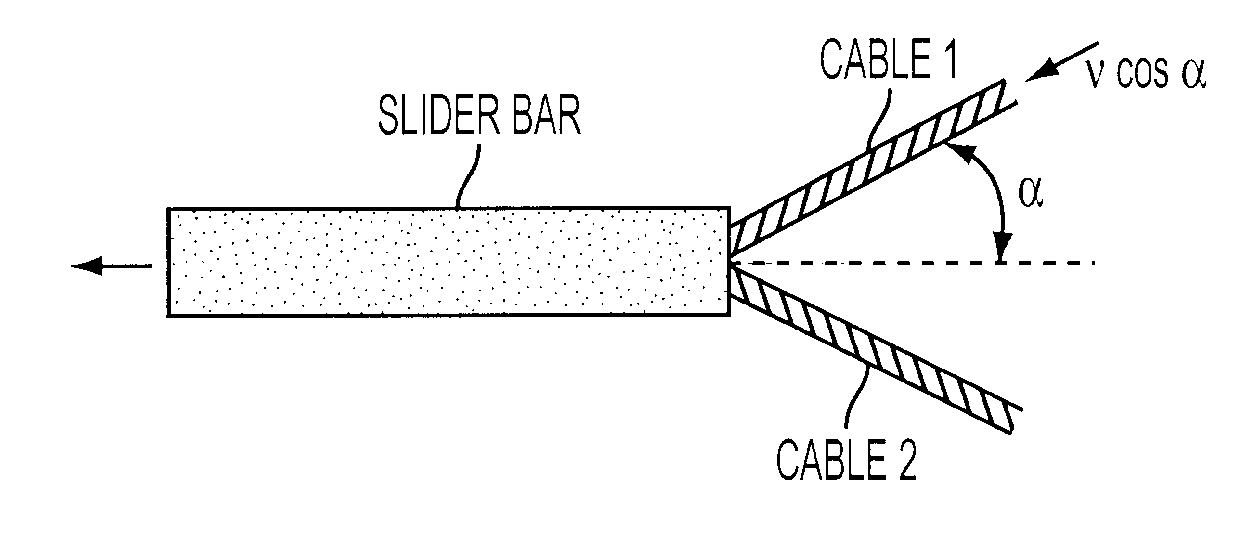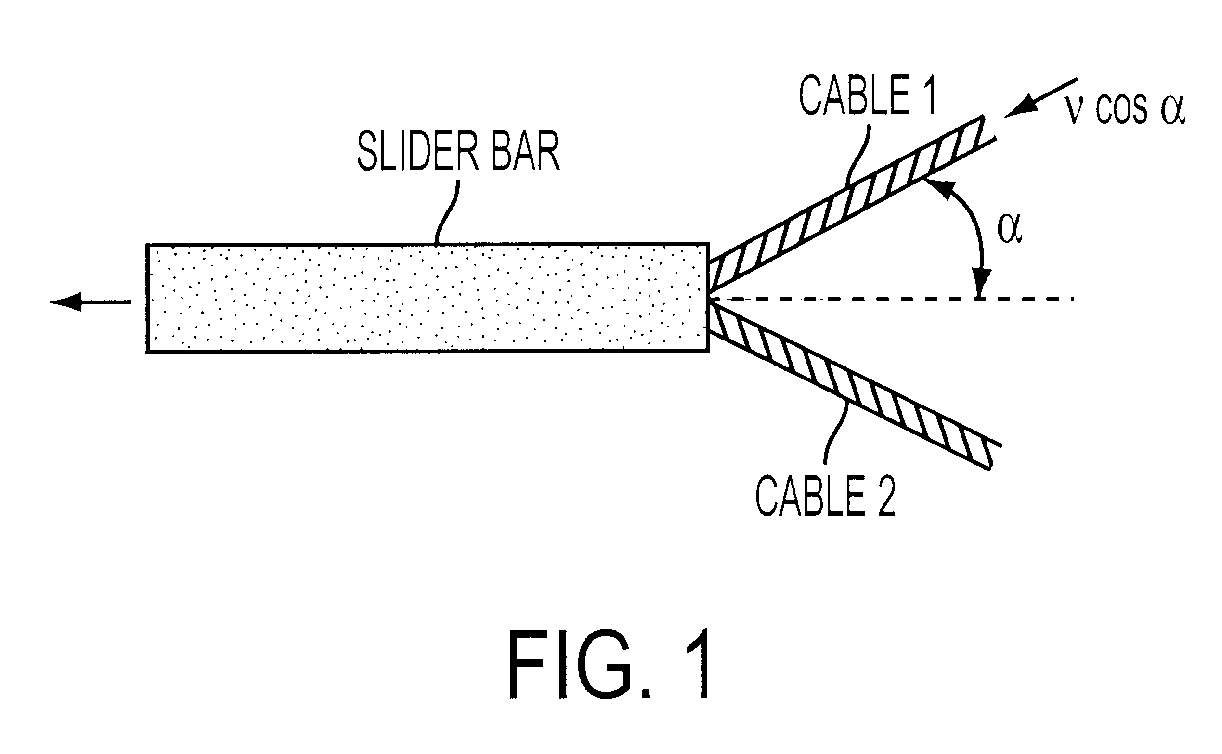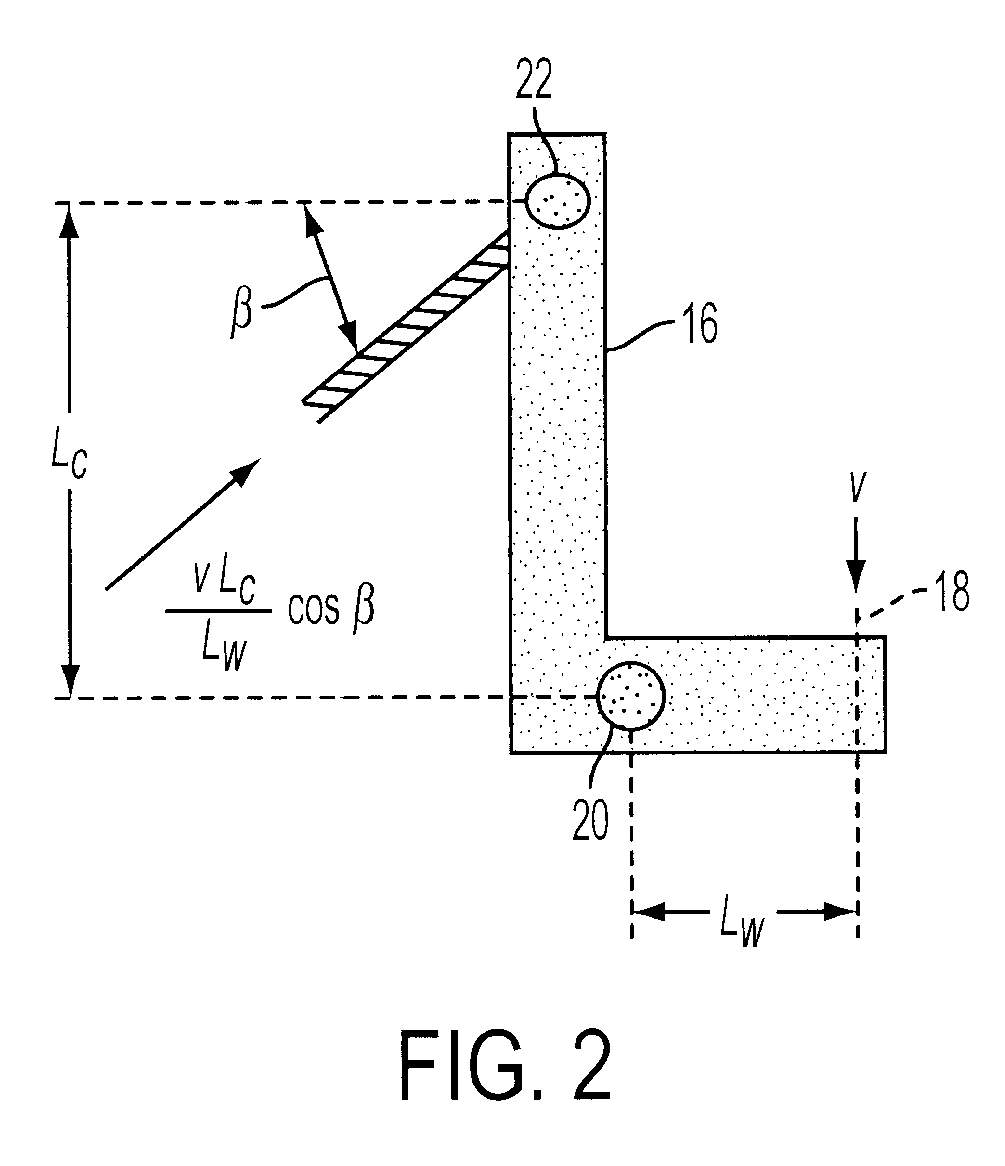Impact tensile test machine
- Summary
- Abstract
- Description
- Claims
- Application Information
AI Technical Summary
Benefits of technology
Problems solved by technology
Method used
Image
Examples
Embodiment Construction
[0034]A high-speed tensile test instrument is described, capable of measuring the mechanical response of elastomers at strain rates ranging from values much less than unity to at least 2000 s−1 for strains through failure. The device employs a drop weight that engages levers to stretch a sample on a horizontal track. To improve dynamic equilibrium, a common problem in high speed testing, equal and opposite loading was applied to each end of the sample. Demonstrative results are reported for two elastomers at strain rates to 588 s−1 with maximum strains of 4.3. At the higher strain rates, there is a substantial inertial contribution to the measured force, an effect unaccounted for in prior devices using the drop weight technique. The strain rates were essentially constant over most of the strain range and fill a three-decade gap in the data from existing methods.
[0035]A schematic of the device is shown in FIG. 3. The weight 12 is raised in a vertical track 10 to a particular height a...
PUM
 Login to View More
Login to View More Abstract
Description
Claims
Application Information
 Login to View More
Login to View More - R&D
- Intellectual Property
- Life Sciences
- Materials
- Tech Scout
- Unparalleled Data Quality
- Higher Quality Content
- 60% Fewer Hallucinations
Browse by: Latest US Patents, China's latest patents, Technical Efficacy Thesaurus, Application Domain, Technology Topic, Popular Technical Reports.
© 2025 PatSnap. All rights reserved.Legal|Privacy policy|Modern Slavery Act Transparency Statement|Sitemap|About US| Contact US: help@patsnap.com



